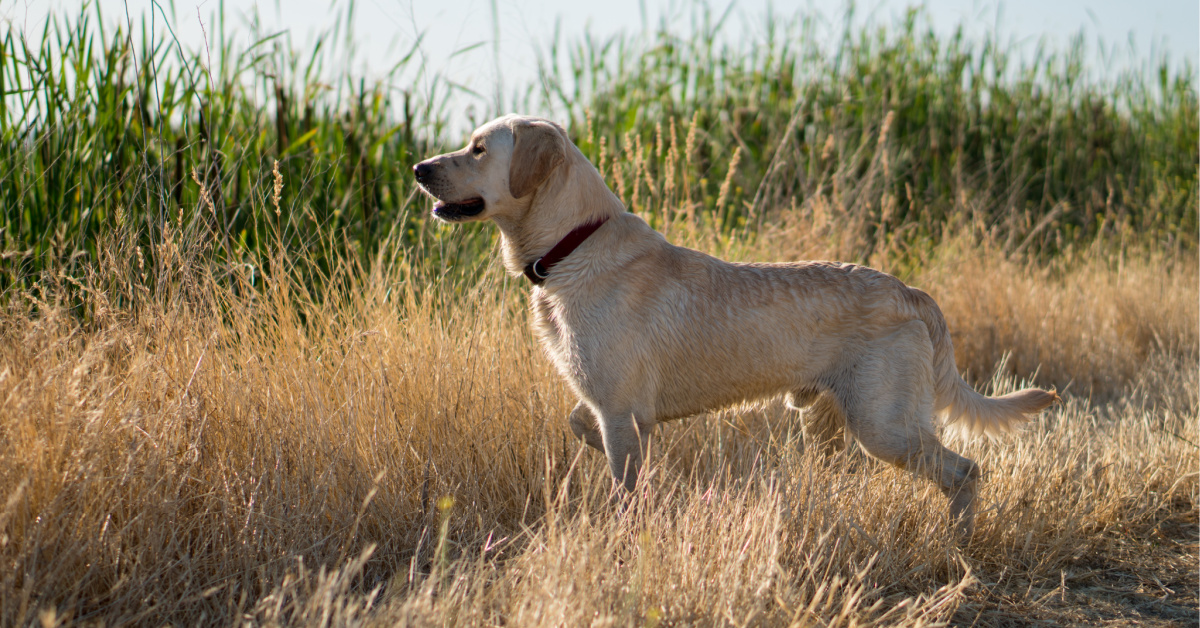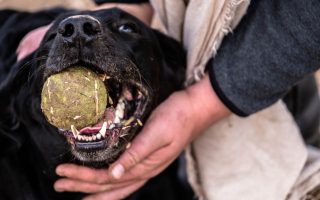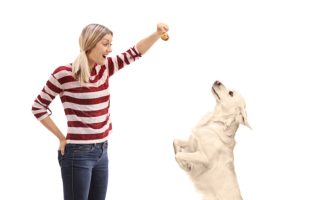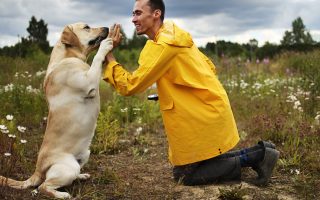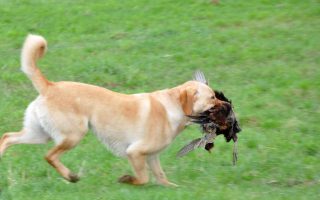How to train a Lab to point is perhaps one of the most important things that you have to do when you decide to bring home a Labrador Retriever puppy for the first time.
Labradors have a rich history of bonding with their human owners and enjoying all sorts of activities with them.
But, before we have come to see Labs today as a loving family pet, the breed actually began its history as a working gun dog.
Is it easy to train a Labrador to be a gun dog?
The gun dog status of the Labrador Retrievers is one of the major reasons why they brought to England and gained popularity.
As gun dogs, Labs make excellent companions since they obey instructions and commands pretty well.
However, if you are an avid hunter who loves to hunt safely with your Labrador companion. Your dog needs to be ready and highly trained.
To ensure that your canine companion prepared to go out with you on your hunting trips, you must know how to train your Lab to point.
A Labrador Retriever that has been trained on how to point can easily let you know. The location of your prey and will learn to stay still until you instruct them otherwise.
This way, you can be sure that your gun dog is safe even when you release gunfire with your Labrador near you.
What is a pointing Labrador Retriever?
Pointing is one of the methods in which a dog can help with hunting. Ideally, your canine pal will show you the location of the game so that you can successfully track it.
A dog is “pointing” when they freeze their body and put one of their front paws up while they aim their nose at a particular location.
Labradors usually do this when they want to bring something o the attention of their pet parents.
Although they may be comfortable in exploring their surroundings all on their own. The reason why your Lab may point even when there are other people around is that they enjoy collaborating with you or with other dogs. This fulfills the social aspects of their personality well.
How to train your Lab to point
Pointing is not a basic skill that is as easy as the basic commands. Although it’s possible that your Lab may naturally learn to point, you may have to recreate scenarios that will make it easier for them to learn.
1. Let them chase prey.
While they are still young, you can have them try to chase prey so that they get a feel for what they will be doing once they become an official gun dog.
This way, they will learn what it is like to chase prey in a way that is natural to them.
Over time, your Lab will also learn that chasing their prey outright will not be as effective as being able to sneak up on the prey. This skill is important since it will let your Labrador Retriever know also when to stop.
You can begin with letting your Lab puppy chase prey before going into fully training them as a pointing Lab.
2. Train your Lab to know when to stop.
The next aspect of how to train your Lab to point is training them to stop at your command.
The first thing you have to do is to teach them how to stop when they hear you whistle.
When you are confident that they are able to follow through, you can then proceed with the next step.
The next step is to teach them to stop at a certain distance from you; the halfway point is a safe bet.
They should at least be able to consistently stop at your command before you continue with the third step.
You may need some time to get to that point, however, so don’t forget to be patient.
3. Use a dummy.
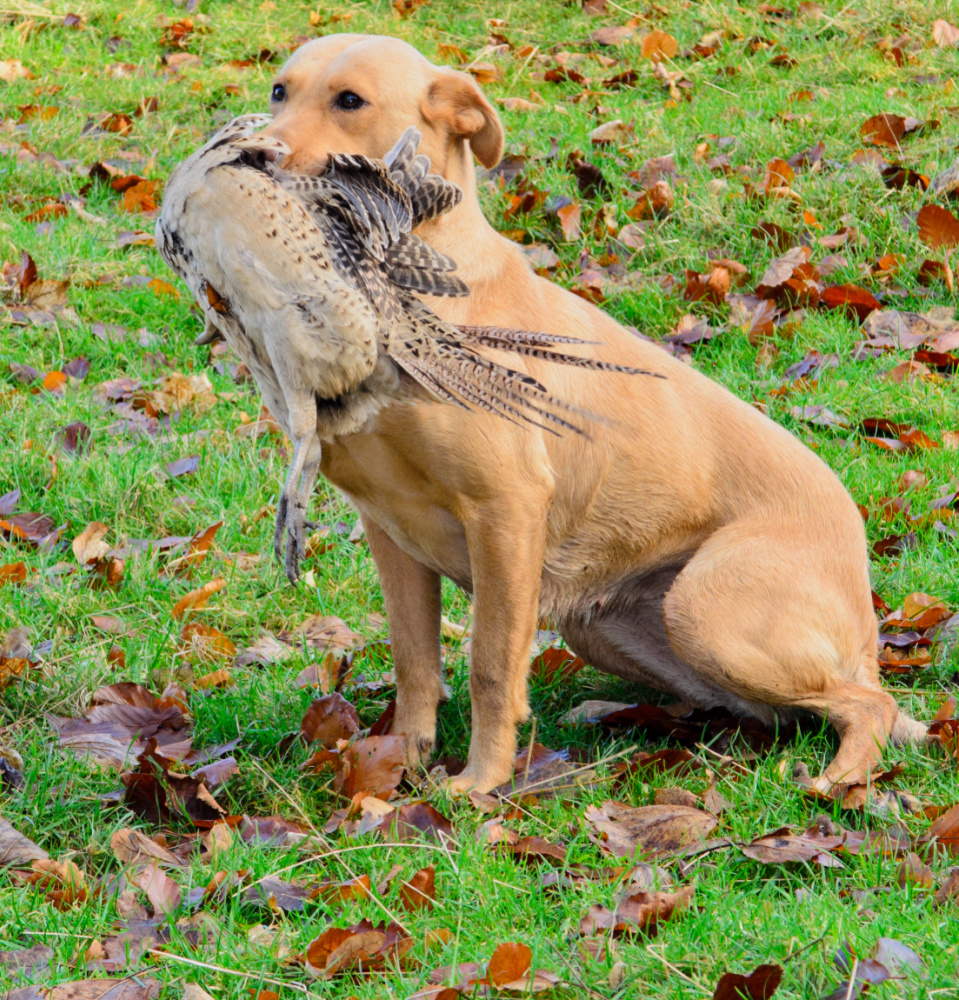
Before you get into using an actual bird for training, you can use a dummy and a bird launcher.
Do the same thing that you just practiced with your dog regarding the stopping at command. This time, however, you should launch the dummy before you tell your Lab to stop.
This entire process of calling your dog, launching the dummy, and calling to stop should be repeated as many times as you can until you see progress.
You will know that the training is effective when your dog stops in their tracks even without you directing them.
Doing it over and over will be helpful in reinforcing the habit.
4. Use a real bird.
The next step is still mostly the same as the last two steps. This time, however, you will be using a real bird to emulate the situation as much as you possibly can.
Again, you will have to repeat this again and again until your Lab understands that they should stop whenever the bird is launched.
Note that the bird to be used should be live and will fly away once launched.
To further go forward with the training, you can put the launcher in an area that is not visible.
The purpose of this is for your dog to learn how to stop when they smell the prey or the game.
You can try this out in different locations just so your Lab can get a feel for what you are trying to teach them.
Tips on how to train your Labrador Retriever to point
1. Always bear in mind what you are training your Lab to point at. Ascertain what chain of events needs to happen before and after they are able to point.
2. Begin your training in a small-sized area that has minimal distractions. If you notice that your Labrador puppy improves, you can then move your training to larger areas that have more distractions.
3. If your Labrador Retriever pup stands still, be sure to stand still with them. Be focused with your puppy for a moment before you reward them for pointing.
Conclusion
Training your Lab to point may seem simple, but it actually requires more than what you probably expect.
First and foremost, you and your Lab need to have a good relationship. Furthermore, they should be able to follow the basic commands in order to proceed with training.
While it can be challenging, training a Lab in pointing is possible given the right time and determination with training.
Remember that it may take a lot of time, but the results will be great if you are willing to do it for some time.
If you are serious about advanced training for your Lab, you should make use of the time when they are still young and quite easy to train.
Lastly, remember to be kind and use positive reinforcement on your Lab. In this study about training methods, where 31% of the respondents were gun dogs, negative training methods were less likely to work.
Even though gun dog work is a more serious type of training, you should still make time to praise your Lab for their good work.

